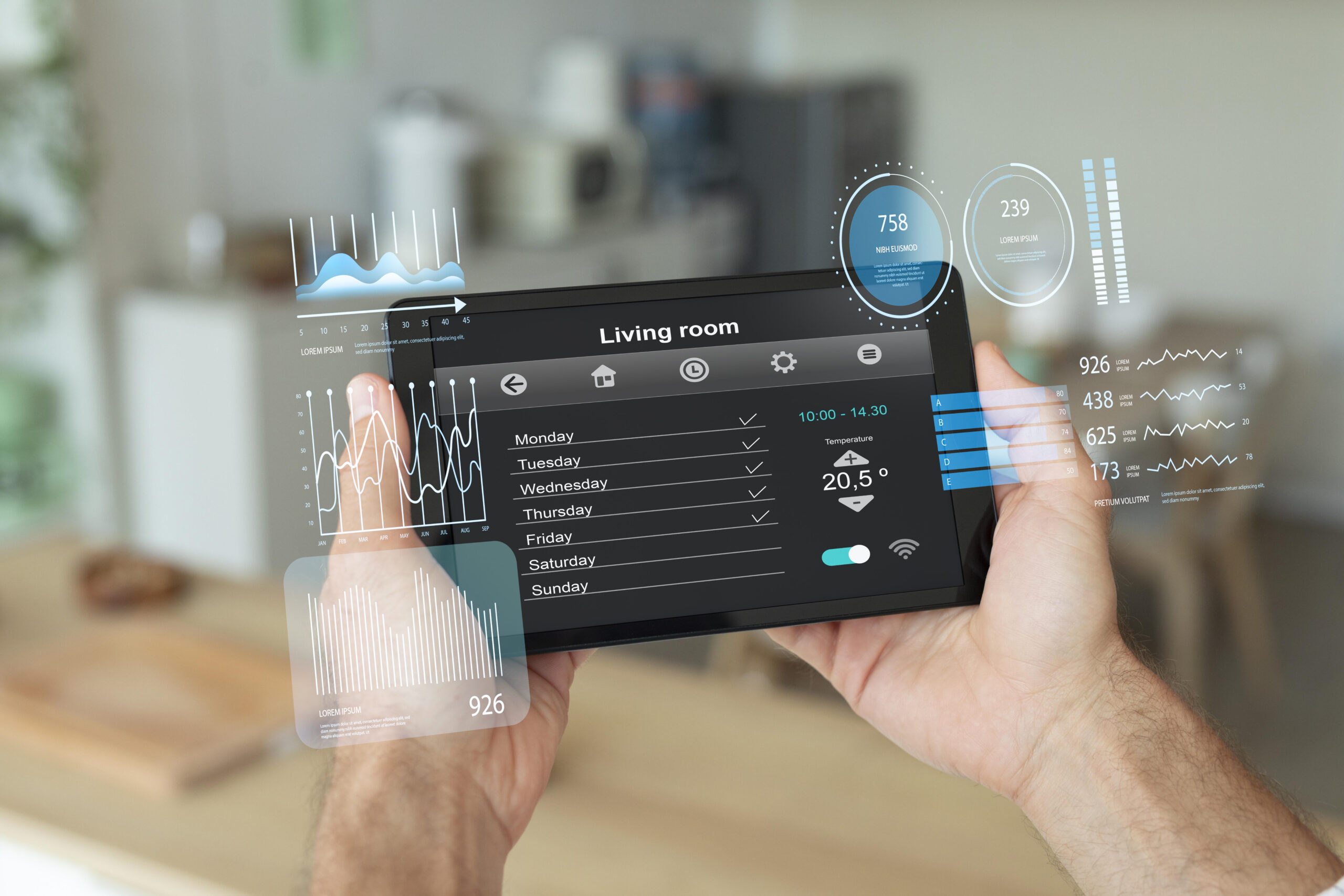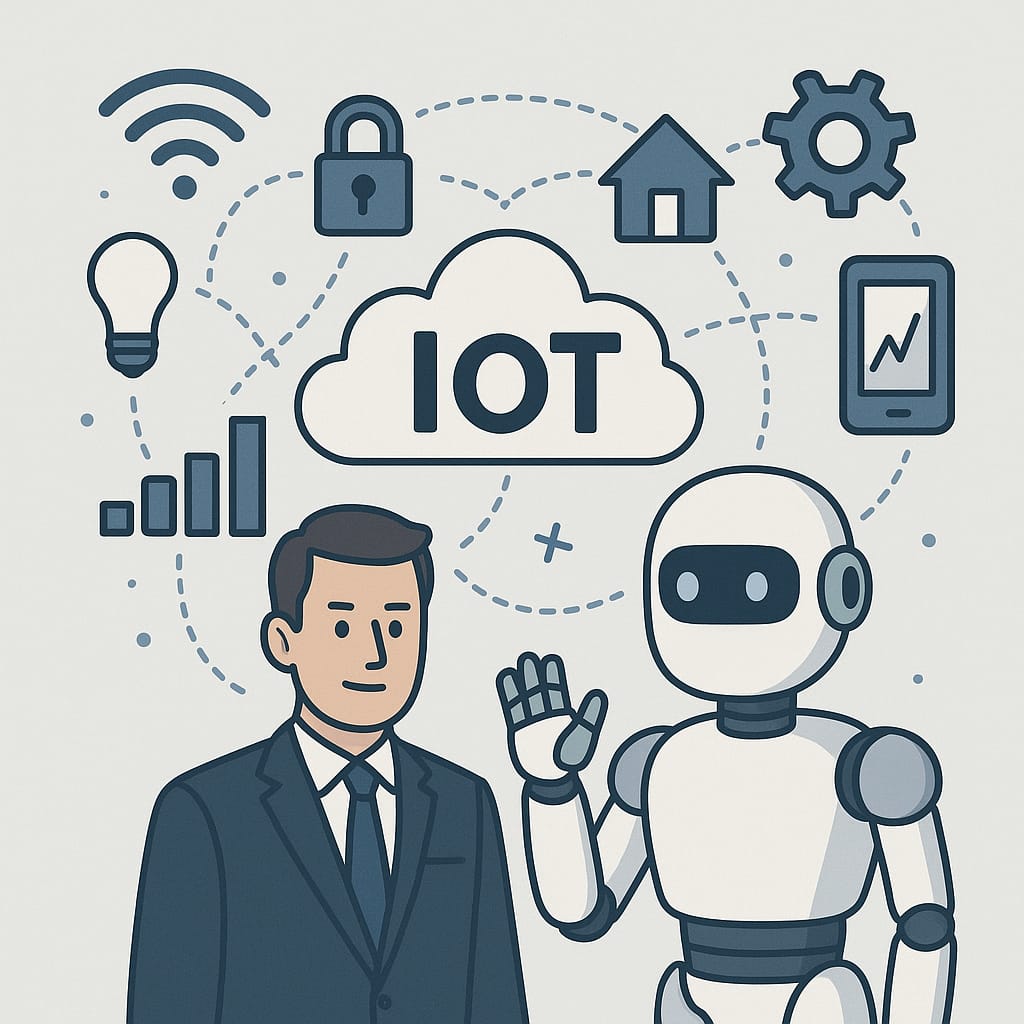Top Web Technologies: Powering the Future of IoT and Robotics

In today’s fast-evolving tech ecosystem, the convergence of IoT and Robotics is revolutionizing how machines interact with each other and with humans. From smart homes to industrial automation and healthcare robotics, the integration of web technologies is shaping the future of IoT and Robotics in unprecedented ways. These cutting-edge solutions rely on web-based platforms and protocols that allow seamless communication, real-time monitoring, and remote control, ensuring a smarter, safer, and more efficient world.This blog is a part of our Service Web designing.
Table of Contents
Node.js: Real-Time Communication Made Easy
One of the most popular web technologies in the IoT and robotics space is Node.js. Its non-blocking I/O model and event-driven architecture make it ideal for handling thousands of connections in real-time. When IoT devices like sensors or actuators collect data, Node.js enables quick responses and ensures low latency communication with servers and robotic systems.
- Use Case: Real-time robotic arm control in manufacturing via browser interfaces.
- Why It Matters: High performance and scalability for real-time robotic automation.
MQTT Protocol: Lightweight Communication for IoT Devices
MQTT (Message Queuing Telemetry Transport) is a publish-subscribe messaging protocol specially designed for low-bandwidth, high-latency networks. It is lightweight, which makes it perfect for small devices used in IoT systems. MQTT facilitates efficient communication between sensors, web platforms, and robots, allowing for fast and accurate data transmission.
- Use Case: Smart home devices sending temperature data to a robot that adjusts room settings.
- Why It Matters: Reliable messaging between constrained devices and cloud-based dashboards.
WebSockets: Persistent Two-Way Communication
Unlike traditional HTTP requests, WebSockets provide a continuous, bidirectional communication channel between the client and server. This feature is invaluable in robotics, where machines must send and receive updates instantly.
- Use Case: Remote robot monitoring and control via a web dashboard.
- Why It Matters: Real-time synchronization of robotic systems with web interfaces.
RESTful APIs: Backbone of Interoperability
REST APIs (Representational State Transfer) are standard tools used to connect different systems and platforms. In the context of IoT and robotics, REST APIs help devices communicate with databases, cloud platforms, and other robots.
- Use Case: An API fetching real-time traffic data for a delivery robot to navigate efficiently.
- Why It Matters: Enables scalable and modular integration between components.
Cloud Platforms: The Brain of IoT and Robotics
Leading cloud platforms like AWS IoT Core, Google Cloud IoT, and Microsoft Azure IoT Hub provide robust infrastructures for device management, data processing, machine learning integration, and storage. Robots and IoT devices leverage these platforms to analyze large volumes of data, adapt behaviors, and improve performance over time.
- Use Case: Cloud-based analytics for predictive maintenance of warehouse robots.
- Why It Matters: Scalable, secure, and AI-powered decision-making in real time.
HTML5 and WebGL: Front-End for Robotics Interfaces
While much of IoT and robotic communication happens in the backend, front-end tools like HTML5, CSS3, and WebGL help create interactive and responsive user interfaces. These technologies allow users to control robots, visualize data from sensors, and receive alerts — all through a web browser.
- Use Case: A 3D visualization of a robotic system’s status using WebGL on a dashboard.
- Why It Matters: Improves user experience and enables remote visualization.
Python & Flask: Lightweight Web Frameworks for IoT Applications
Python is already dominant in robotics due to its simplicity and wide library support. When paired with Flask, a micro web framework, developers can build lightweight web applications that interact directly with IoT devices and robotic systems.
- Use Case: A robot running Python scripts communicates with a Flask-based dashboard.
- Why It Matters: Fast development and easy integration with robotic algorithms.
Edge Computing: Reducing Latency in Robotics
Edge computing involves processing data closer to where it is generated (i.e., at the “edge” of the network). Instead of sending all data to the cloud, edge devices analyze and act on data locally. Web technologies now support edge integrations through containerization tools like Docker and communication protocols that work over LAN.
- Use Case: Drones processing video locally to detect objects and avoid collisions.
- Why It Matters: Minimizes delay and enhances autonomous response.
Blockchain for IoT Security
As the number of connected devices increases, so does the potential for security breaches. Blockchain technology offers decentralized and immutable record-keeping, which is increasingly used to secure data in IoT and robotics applications.
- Use Case: Autonomous delivery robots recording routes and events on a blockchain ledger.
- Why It Matters: Ensures data integrity, transparency, and secure transactions.
Progressive Web Apps (PWAs): Seamless Control Interfaces
PWAs offer offline access, push notifications, and a mobile-first experience — all crucial for controlling and monitoring robots from any device. They blend the power of web apps and native apps, making them perfect for the future of IoT and robotics.
- Use Case: A PWA that controls robotic arms in a lab from a tablet without constant internet access.
- Why It Matters: Improves accessibility and reliability in robotic control systems.
How Web Technologies Connect IoT and Robotics

Web technologies play a crucial role in bridging the gap between IoT devices and robotic systems, enabling seamless communication, data exchange, and remote control. With the help of protocols such as RESTful APIs, WebSockets, and MQTT, data collected by IoT sensors is transmitted to robotic systems in real time. This allows robots to respond immediately to changes in the environment, making operations smarter and more efficient.
For example, temperature sensors in a smart greenhouse can send data via MQTT to a web-based control system. This system can then instruct robotic arms to open vents or water plants — all without human intervention. Similarly, REST APIs allow different devices, platforms, and robotic systems to communicate and operate in a unified, cloud-connected environment.
Web dashboards built with HTML5, JavaScript, and frameworks like React or Angular provide intuitive user interfaces to monitor and control IoT-connected robots from anywhere in the world. These interfaces are essential for remote operations, data visualization, and real-time alerts, especially in industrial or healthcare applications.
As cloud computing and edge technologies evolve, web technologies continue to enhance scalability, reduce latency, and improve the interoperability of connected systems. This integration is at the core of the future of IoT and robotics, enabling smarter homes, autonomous vehicles, intelligent factories, and healthcare robots that work round the clock.
In summary, web technologies not only power the backend and frontend of modern robotic systems but also make it possible for IoT and robotics to function as a cohesive, intelligent network — paving the way for a truly automated and connected future.
Challenges in Integrating Web Technologies with IoT and Robotics
While the fusion of IoT and robotics with web technologies promises innovation, several challenges still hinder full-scale adoption and performance. Understanding these obstacles is crucial for shaping the future of IoT and robotics more effectively.
Security and Privacy Concerns
IoT devices and robots often collect sensitive data. Without proper encryption and security protocols, they become targets for cyberattacks. Ensuring secure APIs, firmware updates, and encrypted data transmission is essential.
Connectivity and Latency Issues
Real-time robotic control depends on fast, stable connections. In areas with poor internet infrastructure, latency and data loss can affect the performance of web-connected robots. Edge computing and 5G aim to solve this, but adoption is still growing.
Interoperability and Standardization
Many IoT devices and robots use proprietary systems, making integration with web technologies difficult. A lack of universal standards leads to compatibility issues between devices, platforms, and interfaces.
Cost and Complexity
Building and maintaining web-integrated IoT and robotic systems involves high initial costs, skilled developers, and continuous updates. This creates barriers for startups or small businesses wanting to enter the space.
Real-Time Processing and Decision Making
Web platforms must process large volumes of sensor data and make split-second decisions for robots. Delays in processing or poorly optimized code can result in malfunction or reduced efficiency.
Future of IoT and Robotics: What Lies Ahead
The future of IoT and Robotics is set to reshape industries, revolutionize daily life, and redefine how humans and machines interact. As these technologies evolve, their convergence will unlock intelligent, autonomous systems capable of making real-time decisions, adapting to dynamic environments, and improving efficiency across sectors.
Smarter Automation in Industries
Manufacturing, logistics, and agriculture will benefit from robots powered by IoT sensors and AI. Machines will monitor performance, detect faults, and fix issues without human intervention — enabling true predictive maintenance and reducing downtime.
Connected Healthcare Solutions
Wearable IoT devices will work in sync with medical robots to monitor patients, administer drugs, or even assist in surgeries remotely. This synergy is expected to improve patient outcomes and make healthcare more accessible, especially in remote areas.
Smart Cities and Autonomous Vehicles
IoT-enabled infrastructure like traffic lights and surveillance cameras will coordinate with robotic systems such as delivery drones and self-driving cars. These collaborations will reduce traffic congestion, enhance safety, and boost energy efficiency.
Human-Robot Collaboration (HRC)
The future of IoT and robotics isn’t just about automation — it’s about collaboration. Robots will work alongside humans in factories, homes, and offices, understanding commands through natural language and adapting to human behavior using real-time sensor data.
AI + Web Technology = Next-Level Robotics
Artificial Intelligence will further enhance the capabilities of robotic systems, but web technologies will remain the bridge that connects everything — enabling cloud control, real-time analytics, and mobile access to robotic systems.
Web technologies are driving the evolution of IoT and robotics, enabling smarter, faster, and more connected systems. As we move toward a more automated world, embracing these technologies is key to unlocking the full potential of the future of IoT and robotics.
Related Post :WordPress and Internet of Things:Connect Iot devices easily
